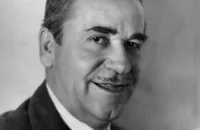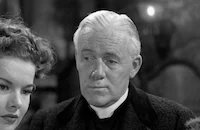The Woman I Stole
Cast & Crew
Irving Cummings
Jack Holt
Fay Wray
Noah Beery
Raquel Torres
Donald Cook
Film Details
Technical Specs

Synopsis
Tough Jim Bradier, an adventurous engineer used to getting whatever he wants by any means necessary, returns to the oil fields he established in North Africa after an extended trip to America. His goal is to take away Vida, the beautiful wife of Stephen Corew, whom Jim appointed general manager because of his affection for Vida. Vida is eager to leave her gentle, serious-minded husband for the more masterful Jim, but the would-be lovers' plans are disrupted by the violent sabotage being committed by a bandit known as General Rayon. Rayon's brigands have been terrorizing the oil workers, and just as Jim is about to confront Stephen about Vida, Stephen accuses him of having left because he is a coward. Angered by Stephen's accusation, Jim decides to stay, and despite their hatred of each other, the two men work together to rid the fields of Rayon. Jim meets with Rayon, who is very similar to him in temperament, and discovers that the bandit is working for Lentz, Jim's ambitious, crooked business manager, who desires to take over the company during the turmoil caused by Rayon. Jim easily convinces Rayon to work for him instead, although Stephen has become convinced that Jim has been masterminding the troubles. Jim produces evidence of Lentz's corruption after the business manager tries to have him killed, and Jim and Stephen realize that the adversity has made them friends. Now aware of Vida's faithless nature, Jim leaves her behind and boards a ship bound for New York. He finds Stephen on board, and as the men toast their freedom, they are joined by Teresita, a tempestous native dancer seeking to continue her amorous pursuit of Jim.

Director
Irving Cummings
Cast

Jack Holt

Fay Wray

Noah Beery

Raquel Torres

Donald Cook
Edwin Maxwell

Charles Brown
Ferdinand Munier

Lee Phelps
Crew

Film Details
Technical Specs

Articles
Fay Wray (1907-2004)
She was born Vina Fay Wray, in Cardston, Alberta, Canada on September 15, 1907. Her family relocated to Arizona when she was still a toddler so her father could find employment. When her parents divorced, her mother sent her to Hollywood when Fay's eldest sister died in the influenza epidemic of 1918. The reasoning was that Southern California offered a healthier climate for the young, frail Wray.
She attended Hollywood High School, where she took some classes in drama. After she graduated, she applied to the Hal Roach studio and was given a six-month contract where she appeared in two-reel Westerns (25 minutes in length), and played opposite Stan Laurel in his pre-Oliver Hardy days.
She landed her first big role, as Mitzi Schrammell, in Erich von Stroheim's beautifully mounted silent The Wedding March (1928). It made Wray a star. She then starred in some excellent films: The Four Feathers (1929), the early Gary Cooper Western The Texan (1930), and one of Ronald Coleman's first starring roles The Unholy Garden (1931), all of which were big hits of the day.
For whatever reason, Wray soon found herself in a string of thrillers that made her one of the great screamers in Hollywood history. The titles say it all: Doctor X, The Most Dangerous Game (both 1932), Mystery of the Wax Museum, The Vampire Bat (both 1933) and, of course her most famous role, that of Ann Darrow, who tempts cinema's most famous ape in the unforgettable King Kong (also 1933).
Wray did prove herself quite capable in genre outside of the horror game, the best of which were Shanghai Madness with Spencer Tracy; The Bowery (both 1933), a tough pre-Hays Code drama opposite George Raft; and the brutal Viva Villa (1934), with Wallace Beery about the famed Mexican bandit. Yet curiously, the quality of her scripts began to tank, and she eventually found herself acting in such mediocre fare as Come Out of the Pantry (1935), and They Met in a Taxi (1936).
With her roles becoming increasingly routine, the last of which was the forgettable comedy Not a Ladies Man (1942), she decided to trade acting for domesticity and married Robert Riskin, who won two Best Screenplay Oscars® for the Frank Capra comedies It Happened One Night (1934) and Mr. Deeds Goes to Town (1936). When Riskin died in 1955, Wray found herself working to keep busy and support her three children. She landed supporting parts for films like The Cobweb (1955), Hell on Frisco Bay (1956) and Tammy and the Bachelor (1957). She also found work in television on such popular programs as Perry Mason and Wagon Train before she retired from acting all together in the mid-'60s.
To her credit, Wray did remain reasonably active after her retirement. She published her autobiography, On The Other Hand in 1989 and was attending many film festivals that honored her contribution to film, most notably in January 2003, when, at 95 years of age, she accepted in person her "Legend in Film" Award at the Palm Beach International Film Festival. Wray is survived by a son, Robert Riskin Jr.; two daughters, Susan and Victoria; and two grandchildren.
by Michael T. Toole

Fay Wray (1907-2004)
Quotes
Trivia
Notes
The working title of this film was Tampico.














